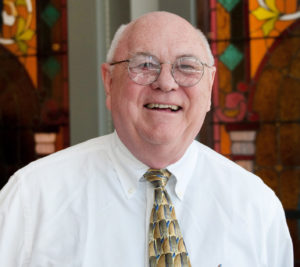
Readings:
Reading I: Acts 1:14, 22-33
Psalm 16: 1-2, 5, 7-8, 9-10, 11
Reading II: 1 Peter 1:17-21
Gospel: Luke 24:13-35
“God comes disguised as our life.” This is a line from the spiritual writer Paula D’Arcy that I read a year ago or so in a reflection by the spiritual writer Richard Rohr. Two weeks ago, in my homily on Easter Sunday, I offered a paraphrase: “The resurrection comes disguised as our life.” This was true for Mary Magdalene at the tomb on Easter morning, true for Peter and the beloved disciple when they ran to the tomb, and true for Mary later as she lingered at the tomb, when she saw whom she thought was the gardener. All three of them looked at the tomb—or at Jesus himself—with “eyes wide shut,” to allude to the disturbing 1999 film starring Tom Cruise and Nicole Kidman. They looked but they didn’t see. They didn’t see the resurrection coming disguised as their life—in an empty tomb, in a folded napkin, in a supposed gardener.
We see the same dynamic played out in today’s gospel reading, the beloved story of the disciples on the road to Emmaus whose eyes became wide open at the breaking of bread. Resurrection comes when we least expect it, in the tragic events of our lives, in life’s ordinary events, when we meet a stranger, when we offer hospitality, when we recognize the truth of our burning hearts. Jesus’ resurrection is too good to be true, Thomas thought, as we heard last week. He just couldn’t believe what his friends told him, but then his eyes were opened too, a week later at an ordinary dinner with them. The resurrection comes disguised as our life.
The Emmaus story has inspired many artists to paint the scene, and many of these paintings are amazingly powerful. As I was reflecting on how to write this reflection I came across a wonderful explanation of Caravaggio’s The Supper at Emmaus that pointed out a small detail that told the whole story. A basket on the table shows two loose twigs that are crossed to form an image of a fish—the Greek letters of which, as we know, mean Jesus, Son of God, Savior. The Easter message comes in the details.
The indigenous Chinese artist He Qi painted a lovely picture of Jesus in the midst of the two disciples on the road, seen from the back. The disciple on the left may well be a woman, perhaps Cleopas’ wife as some scholars speculate. Jesus has his hands gently on each of the disciples’ backs, and Cleopas stares at Jesus sideways, his eye wide open, but seeing only the stranger.
The poet Denise Levertov, in a profoundly beautiful poem reflecting on Diego Velásquez’ Kitchen Maid with the Supper at Emmaus, writes of how the Black kitchen maid listens carefully to Jesus’ voice, recognizes the gaze on her that she experienced once while listening to Jesus in the crowd, and then sees the light surrounding him—all this just before the disciples’ eyes wide shut are made eyes wide open.
In some ways my favorite painting of our gospel scene is by Filipino artist Emmanuel Garibay. Garibay has painted the scene several times, and in several ways, but always depicts the disciples in excited, laughing conversation at a table, drinking San Miguel beer, a beer manufactured in the Philippines in an unmistakable brown bottle. They are in conversation with a woman, who is of course Jesus, disguised as their life. In one version of the painting the woman holds up a hand that has been pierced by a nail, her other pierced hand visible on the table. The disciples’ eyes wide shut have just become eyes wide open. As art critic Rod Pattenden points out in a reflection on Garibay’s paintings, “Garibay makes a theological point through play and surprise, overturning the image we had in our mind’s eye. An appropriate theological response to resurrection is amazement, which should be accompanied by an equal amazement that we could have missed the point. Like Jesus at Emmaus, Garibay confronts us with our inherent blindness. We say we have faith and yet we cannot see.”
The resurrection comes to us disguised as our life. Let’s prepare to be surprised like the disciples at Emmaus, because we will be!
Steve Bevans, SVD
Louis J. Luzbetak, SVD Professor of Mission and Culture, Emeritus